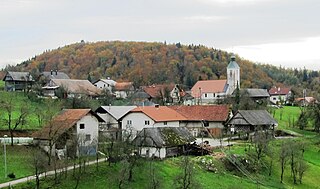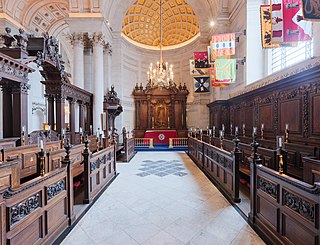
Ljutomer is a town in northeastern Slovenia, some 40 km east of Maribor. It is the seat of the Municipality of Ljutomer. Traditionally it was part of the region of Styria. It is now included in the Mura Statistical Region. The economy of Ljutomer is largely based on grape farming and wine making.

Cven is a village in the Municipality of Ljutomer in eastern Slovenia. The area traditionally belonged to the Styria region and is now included in the Mura Statistical Region.

Babinci is a village in the Municipality of Ljutomer in northeastern Slovenia. The area traditionally belonged to the Styria region and is now included in the Mura Statistical Region.

Bodislavci is a settlement in the Slovene Hills in the Municipality of Ljutomer in northeastern Slovenia. The area traditionally belonged to the Styria region and is now included in the Mura Statistical Region.

Plešivica is a small settlement in the Slovene Hills in the Municipality of Ljutomer in northeastern Slovenia. The area traditionally belonged to the Styria region and is now included in the Mura Statistical Region.

Gržeča Vas is a village west of Veliki Podlog in the Municipality of Krško in eastern Slovenia. The area was traditionally part of Lower Carniola. It is now included with the rest of the municipality in the Lower Sava Statistical Region.

Slamna Vas is a village north of the town of Metlika in the White Carniola area of southeastern Slovenia, on the border with Croatia. The area is part of the traditional region of Lower Carniola and is now included in the Southeast Slovenia Statistical Region.

Stara Nova Vas is a village in the Municipality of Križevci in northeastern Slovenia. It lies on the regional road from Ljutomer to Radenci in the traditional region of Styria. The entire municipality is now included in the Mura Statistical Region.

Vučja Vas is a village in the Municipality of Križevci in northeastern Slovenia. It lies on the regional road from Ljutomer to Radenci. Traditionally the area was part of Styria. The municipality is now included in the Mura Statistical Region.

Arja Vas is a roadside settlement in the Municipality of Žalec in east-central Slovenia. The A1 motorway crosses the territory of the settlement north of the village. The area is part of the traditional region of Styria. The municipality is now included in the Savinja Statistical Region.

Vavpča Vas pri Dobrniču is a settlement in the Municipality of Trebnje in eastern Slovenia. It lies in a small valley north of Dobrnič. Traditionally the area was part of Lower Carniola. The municipality is now included in the Southeast Slovenia Statistical Region.

Vavta Vas is a village on the right bank of the Krka River in the Municipality of Straža in southeastern Slovenia. The area is part of the historical region of Lower Carniola. The municipality is now included in the Southeast Slovenia Statistical Region.

Dolnja Stara Vas is a village in the Municipality of Škocjan in southeastern Slovenia. The area is part of the historical region of Lower Carniola. The municipality is now included in the Southeast Slovenia Statistical Region.

Ponova Vas is a village southwest of Grosuplje in central Slovenia. The area is part of the historical region of Lower Carniola. The Municipality of Grosuplje is included in the Central Slovenia Statistical Region. The settlement includes the hamlets of Čemetija, Benat, and Kobiljek.

Troščine is a small village north of Polica in the Municipality of Grosuplje in central Slovenia. The area is part of the historical region of Lower Carniola. The municipality is now included in the Central Slovenia Statistical Region.

Kriška Vas is a village south of Višnja Gora in the Municipality of Ivančna Gorica in central Slovenia. The area is part of the historical region of Lower Carniola. The municipality is now included in the Central Slovenia Statistical Region.

Muha Vas is a village in the Municipality of Kočevje in southern Slovenia. The area is part of the traditional region of Lower Carniola and is now included in the Southeast Slovenia Statistical Region. It no longer has any permanent residents.

Jelenja Vas is a hamlet of the village of Štalcerji in the Municipality of Kočevje in southern Slovenia. Formerly, it was an independent settlement. The area is part of the traditional region of Lower Carniola and is now included in the Southeast Slovenia Statistical Region.

Štepanja Vas is a formerly independent settlement in the southeast part of the capital Ljubljana in central Slovenia. It belongs to the City Municipality of Ljubljana. It was part of the traditional region of Lower Carniola and is now included with the rest of the municipality in the Central Slovenia Statistical Region.

Jerova Vas is a formerly independent settlement in the northern part of the town of Grosuplje in central Slovenia. It belongs to the Municipality of Grosuplje. It was part of the traditional region of Lower Carniola and is now included with the rest of the municipality in the Central Slovenia Statistical Region.
















